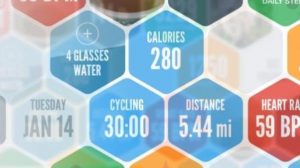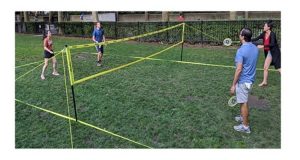
Plyometric exercises are the best if you want both speed as well as strength. Plyometrics is also a great alternative to cardiovascular exercises. Learn how to do it correctly
Want to improve your quickness, and improve your nervous system’s reaction time?
Plyo training can be a very effective method!
Athletes from a wide range of sports have been using plyometric training to help them reach peak physical condition.
Used correctly, it can actually be a very effective form of power training.
What is Plyometrics?
Basically Plyometrics Training refers to exercise that enables a muscle to reach maximum force in the shortest possible time. The muscle is loaded with an eccentric (lengthening) action, followed immediately by a concentric (shortening) action.
Stretch-Shortening Cycle – Basis of Plyo Exercise
Let us go through a bit of theory here!
All plyometric movements involve three phases. The first phase is the pre-stretch or eccentric muscle action. Here, elastic energy is generated and stored.
The second phase is the time between the end of the pre-stretch and the start of the concentric muscle action. This brief transition period from stretching to contracting is known as the amortization phase. The shorter this phase is, the more powerful the subsequent muscle contraction will be.
The third and final phase is the actual muscle contraction. In practice, this is the movement the athlete desires – the powerful jump or throw.
This sequence of three phases is called the stretch-shortening cycle. In fact, plyometrics could also be called stretch-shortening cycle exercises.
Plyometric Exercise – Sample Exercises
Here are some exercises which you can use as part of your Plyometric Workout. As usual, stretch well before you start your plyo routine to prevent injury.
Jump Rope
Jump rope for 2 minutes just to get your body warmed up so you do not injure yourself. If you don’t know how to jump rope, learn here.
High Knees
Run in place lifting your knees as high as you can.
Step-Ups
Find a platform and step onto it with both feet then step back down. Try doing this as fast as your can. Almost at a running pace. I switch feet every 10 steps-ups.
Line Jump
Make a line with your jump rope, or imagine one on the ground and jump over it side to side. Do this as quickly as possible without getting a lot of height. Your feet should come off the ground only a few inches.
High Knee Jumps
Jump off the ground lifting your knees to your chest or as high as you can.
Tyres
If you do not have a pair of rubber tyres, don’t worry, just pretend you do. Lift your knees as high as you can and imagine you are stepping your feet into two side-by-side tyres. Go side to side for a minute, then go forwards and backwards for a minute.
Jump Switches
Spread your legs a bit and bend your knees as if you are getting ready to wrestle. Lower your body into a a squat position. Jump up and turn your whole body to face the other side. Repeat for the other side.
Gap Jump
Going from side to side, jump as far as you can landing one foot at a time as if you were jumping from one ledge to another.
Repeat this whole sequence again starting with 2 minutes of Jump rope.
Summary
Plyometric workouts are a great alternative to cardiovascular exercises. Plyometric training is the best if you want to develop both speed as well as strength. You should experience considerable increase in your athletic ability, especially in your response times if you stick to plyometrics for some time.









Leave a Reply